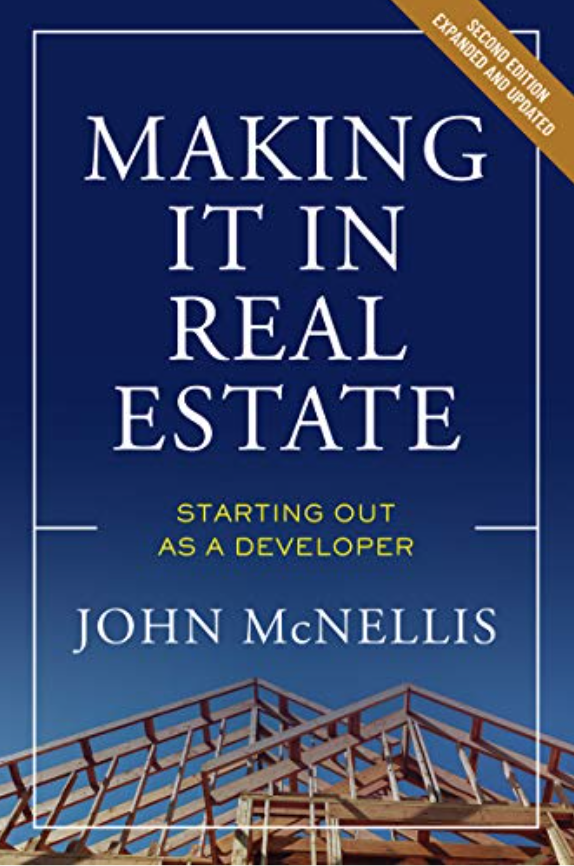Bankers know that developers’ financial statements are rife with dubious valuations based on hopeful assumptions and guesswork. So why do they insist on them?
Franklin Delano Roosevelt’s first vice president, “Cactus Jack” Garner, is fondly remembered for having observed, “The vice presidency isn’t worth a bucket of warm spit.” Except he didn’t say spit.
In this regard, the vice presidency bears an odd resemblance to financial statements. They, too, are often worthless, some spoiled by mere puffery, others by outright fraud. In their course on contracts, law students learn the difference between puffery and fraud. While seldom this clear cut, puffery is claiming your condominium has the finest views in Manhattan, fraud is swearing it’s three times larger than its actual size. The American economy is built on puffery, but can be surprisingly intolerant of outright fraud.
Leaving fraud to the courts, it might be useful to understand how financial statements can be so puffed up.
If you’re developing or simply investing in property, you’re in the business of borrowing money. If so, you must prepare annual financial statements for your bankers. Unlike the reporting requirements for public companies, financial statements for individuals are simple (at least in concept): a balance sheet that lists all assets and liabilities, deducts the liabilities, thereby producing a statement of net worth.
Broadly stated, real estate liabilities are as objective as body temperatures; reporting them is easy, a matter of faithfully recording numbers. One simply lists the year-end balances on all commercial and private loans, credit cards, taxes due, etc.
Assets are another story. Valuing property is more subjective than judging a cake-baking contest. After a couple drinks, even stony bank appraisers will admit their valuation methodologies are riddled with judgment calls. Developers know valuing assets is as much art as science. Optimists by definition, they often ascribe values to their properties that might, charitably put, be described as aspirational.
Bankers know all this; they’re smart. Yes, they require financial statements, but they scarcely rely on them. In an informal poll, three fancy bankers agreed that most of their borrowers exaggerate their financial statements, on average as much as 30 percent. This forces bankers to consider financial statements as akin to unreliable road maps—the way signs may be there, but they must navigate on their own. The bankers also pointed out that net worth isn’t their primary concern in underwriting a loan request. One paraphrased the old expression, “You can’t eat net worth” into “Net worth never made a loan payment”. Instead, bankers focus on their developer’s cash flow, the money that will service their loan payments. By the way, cash flow isn’t nearly as amenable to exaggeration as net worth; it can be readily checked against operating reports, bank statements and tax returns.
If calculated on a pretax basis (they usually are), financial statements can be unintentionally exaggerated, particularly in real estate. Thanks to the 1031 tax-deferred exchange, if a savvy real estate entrepreneur has been around long enough to be truly successful, his current portfolio is likely the offspring of a dozen 1031 exchanges over several decades. Couple this with that developer’s annual write-offs of depreciation, and he could have a seriously negative basis in his properties: e.g., his portfolio is worth $20 million, but his negative basis is $40 million which means that if the portfolio were sold for that $20 million, he would have a taxable gain of $60 million, leaving him with—round numbers—zero after taxes.
The only way for a real estate mogul to sell without triggering this tax—dying—has yet to be widely embraced.
Putting real estate’s idiosyncrasies aside, financial statements are still problematic. Even if a financial statement were to accurately reflect the market value of assets and accurately deduct the inchoate taxes, issues are likely to linger.
How would you prefer your own personal $10 million net worth—assets of $10 million and liabilities of $0, or assets of $3.01 billion and liabilities of $3 billion? Unless you’re dying to star in your own reality TV show, the choice is as obvious as the problem with a naked financial statement: it doesn’t account for the fact that an over-leveraged net worth can, back to Cactus Jack, evaporate like spit on a griddle.
And even assuming you chose the $10 million free and clear, that says nothing about your cash flow, your banker’s real issue. $10 million in gold or any growth stock is good for a nice round zero in annual income, while $10 million in Treasuries yields around five percent today, but those yields are subject to daily change; two years ago, treasuries earned about one and a half percent.
This is where real estate can pay off. A solid real estate portfolio worth $10 million could easily net $500,000 to $700,000 year in stable, recurring cash flow.
The bankers are right: it’s all about cash flow.






















